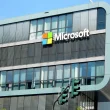Groundbreaking research conducted by ecologists from the US Forest Service and international partners has demonstrated that planted mangrove forests can store up to 70% of the carbon found in natural mangrove stands within just 20 years. This means that mangroves can, within 20 years, accumulate up to 70% of the amount of carbon that is typically stored in mature, undisturbed (intact) forests. This highlights the effectiveness of planted mangroves in capturing and storing carbon over a relatively short period.
This finding offers promising insights into mangrove restoration efforts worldwide. This research was conducted by a global team of mangrove researchers led by Carine Bourgeois from the Forest Service’s International Programs office.
Rich MacKenzie, a member of the researcher’s team said that he along with another researcher Sahadev Sharma discovered around 10 years ago that 20-year-old mangrove plantations in Cambodia had carbon stocks comparable to those of intact forests. They then collaborated with the global researchers’ team to further their research.
Mangroves are known for their exceptional capacity to absorb and store carbon dioxide, a critical function in the fight against climate change. However, the effectiveness of planted mangroves compared to their natural counterparts has not been quantified until now.
This study utilised logistic models, incorporating 40 years of data from about 700 planted mangrove stands worldwide. The results, according to the team show that planted mangroves can achieve 71-73% of the carbon storage of natural stands after two decades.
These findings are crucial as the world has witnessed a 35% decrease in global mangrove areas over the past fifty years due to various factors including human-induced land use changes, extreme weather events, and erosion. The ongoing research includes monitoring these ecosystems to assess restoration success and inform adaptive management strategies, emphasized Rupesh Bhomia from the Center for International Forestry Research and World Agroforestry (CIFOR-ICRAF).
While the potential of mangrove restoration is immense, MacKenzie stated, “Properly planned and implemented mangrove plantations are more effective at restoring carbon stocks than degraded stands. However, this does not mean that mangrove plantations are always the best restoration method.”
Bourgeois further stressed the importance of conserving natural mangrove stands, noting that even if all restorable mangrove areas were replanted, they would absorb less than one percent of annual global emissions over the next two decades.




















